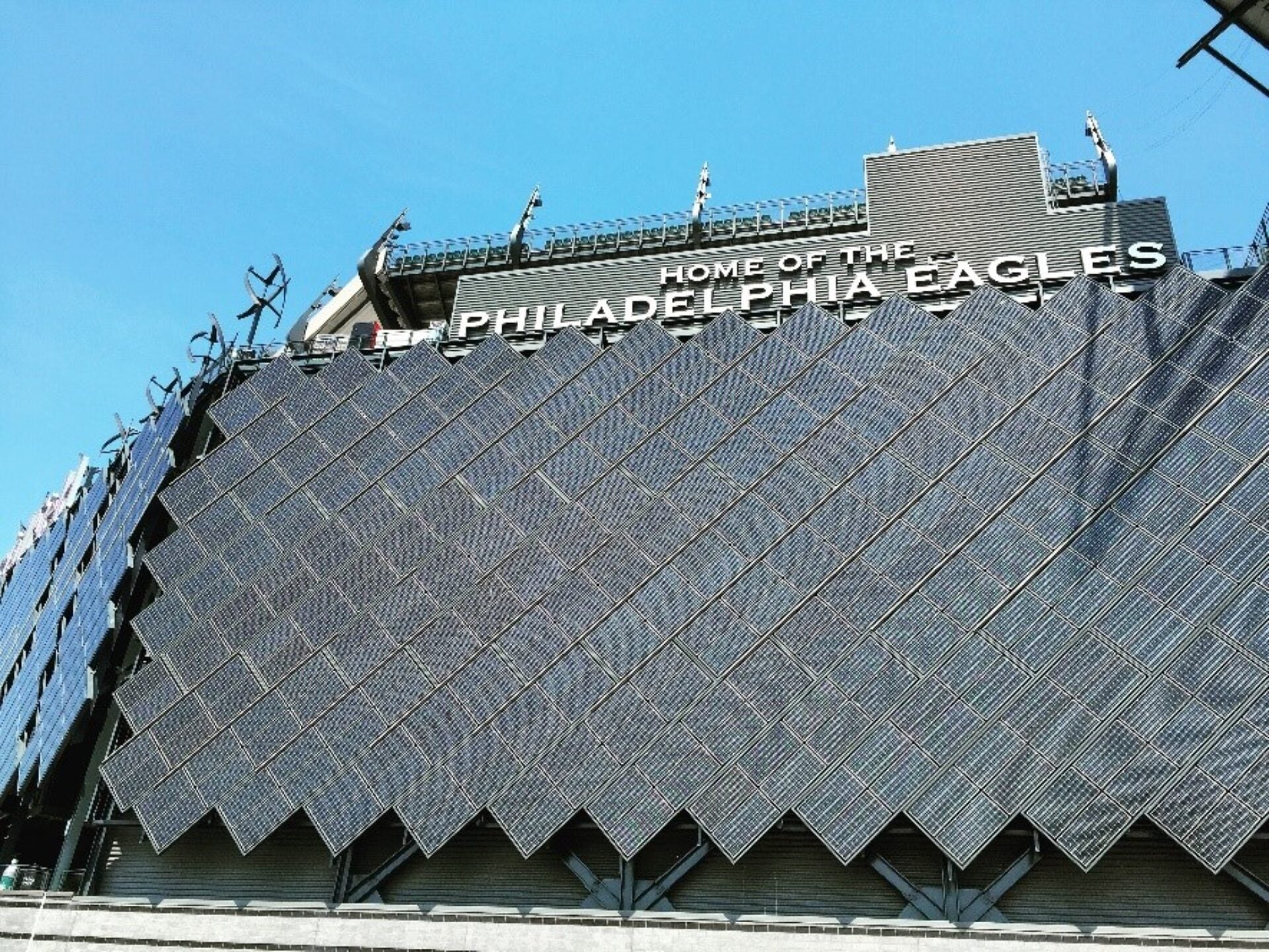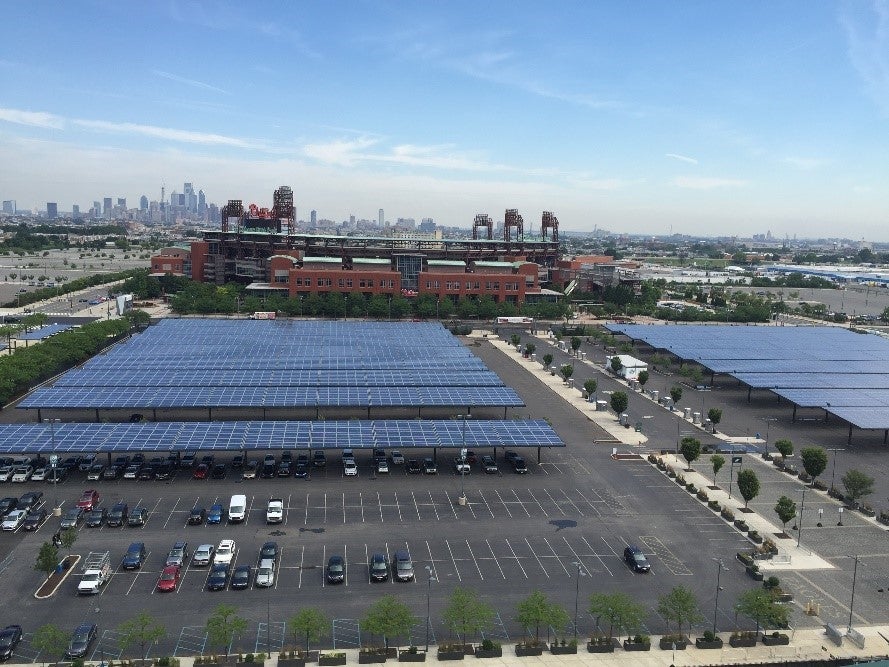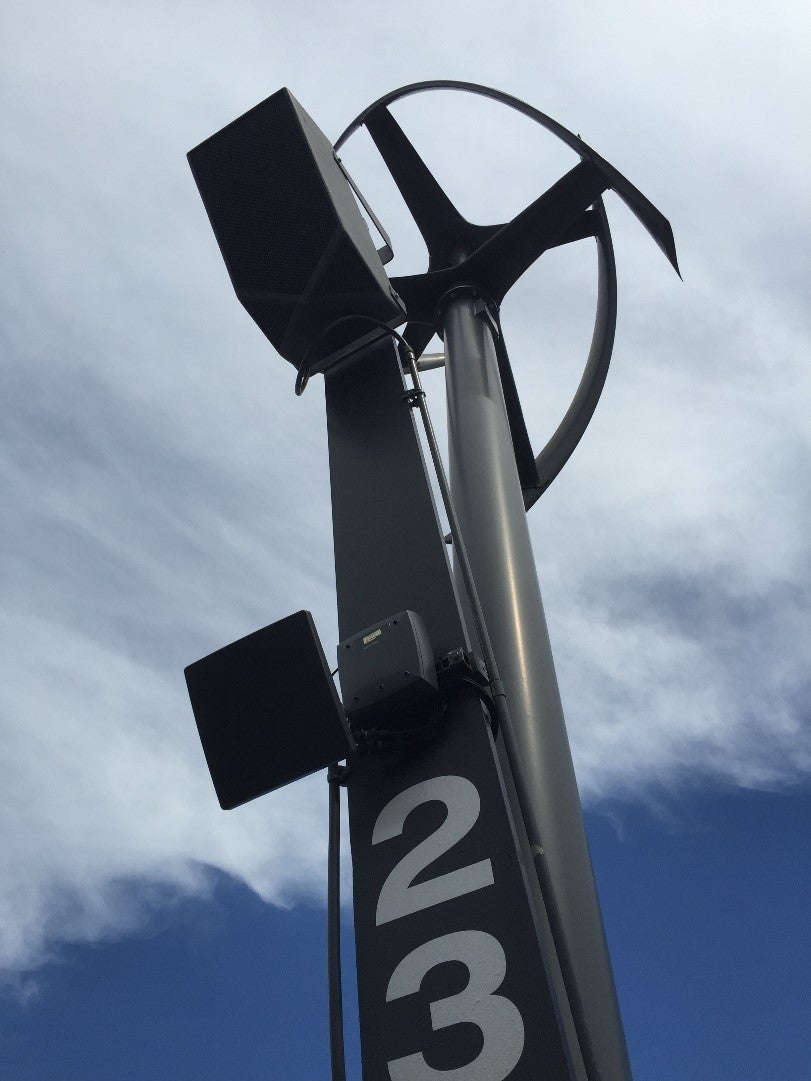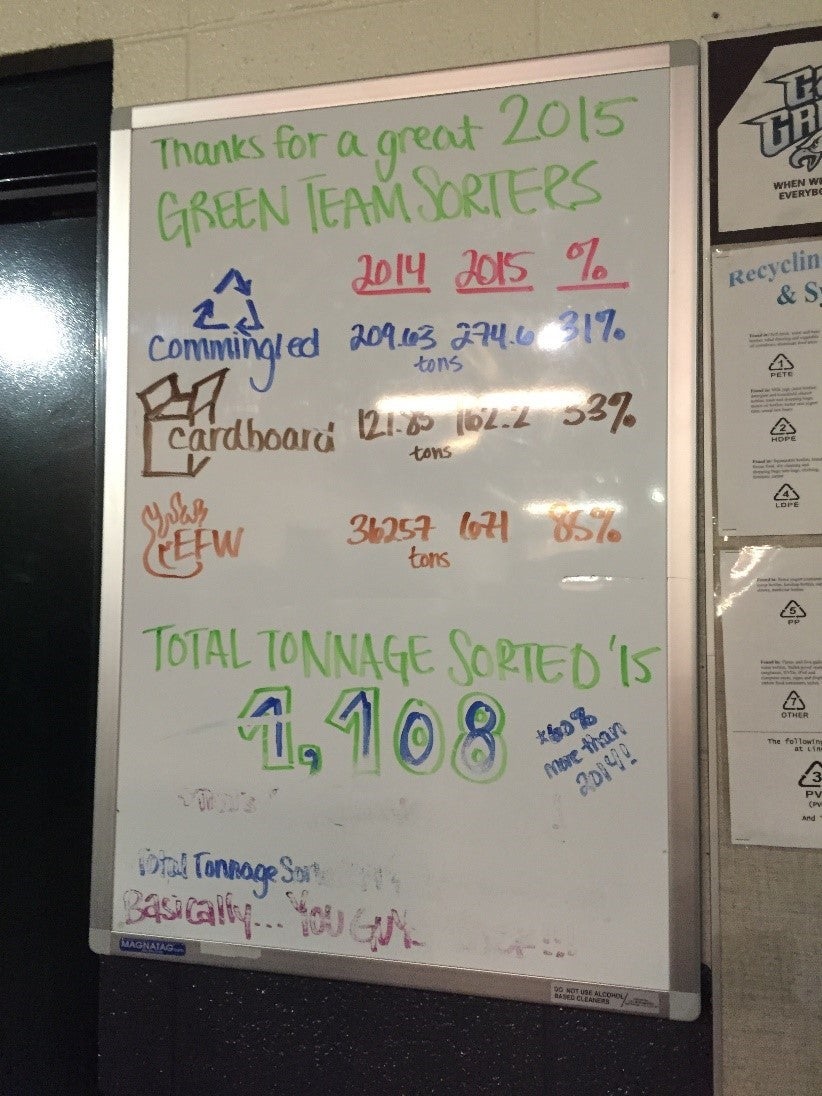
Philadelphia Eagles Go Green with Renewable Energy
Last week, Kleinman Center staff had the opportunity through A Renewable America to tour the green programs at Lincoln Financial Field. The stadium, located in south Philadelphia, is one of the greenest in the world due to its commitment to renewable energies and robust recycling and waste management programs.
The arena uses 100% green energy and is fitted with over 11,000 solar panels and 14 wind turbines that work around the clock to supply more than 4MW of generating capacity. That is over four times the power used during a season of Eagles home games. The majority of the power comes from the solar parking panels and the paneling on the south side of the stadium. This impressive collection of solar is the largest array in Philadelphia.

The 14 wind turbines on the south and north side of the stadium provide some power, but the real punch comes from solar. As our tour guide, Norman Vossschulte the Director of Fan Experience described, one turbine might create enough power in a day to run a blow dryer, which is not exactly enough to supply an entire sports arena. As Eagles President Don Smolenski explained, the wind turbines are primarily “a visual representation of our commitment to sustainable efforts.”
But what about when it’s not game day? Including preseason, there are only 10 Eagles home games this year. The stadium also houses some college sports games and summer concerts, but the majority of the year, the stadium is only operating enough to power office space and other essential equipment. On off days, the majority of the power generated will be fed back into the grid.

NRG owns, maintains, and operates the Linc’s energy system. The Eagles have agreed to buy back power from NRG for a predetermined price over 12 years. That way when the Eagles need a boost of energy before game day, the stadium can purchase renewable energy credits to cover the extra energy used.
Beyond just energy, the stadium has a strong recycling program. The “Green Team Sorters” are a group of about 60 staff members who manually sort all recycling after game and event days, generating more than 1,100 tons of recycled material each year. The aluminum is stored on site and is sold at peak times in order to maximize profits.
The Linc also participates in the EPA’s waste to energy program, which encourages energy recovery from waste by converting non-recyclable waste materials into usable heat, electricity, or fuel. Through this program, the Eagles divert 99% of their waste from landfills. The stadium also creates biodiesel, from food grease generated on site, to power the trucks and machinery used in the stadium. Thankfully, Philadelphians eat enough Chickie and Pete’s crab fries that there is always plenty of grease available.

The building is LEED Silver certified from the US Green Building Council and is actively working to bring their certification level up to Gold. The LEED lighting retrofit has thus far saved up to five years in electric costs. The automated lighting saves over $50,000 a year through automated lighting shutdowns every 30 or 15 minutes, when a room is not in use. Making the switch from electric heat to gas saves over 150,000 a month. The team is also considering rooftop gardens, which can provide building insulation, cleaner air, and delay storm water runoff.
Despite a less than stellar regular season performance last year, the Philadelphia Eagles are winning in green and renewable technologies, and are saving money doing it. This green business model is better for the community and environment but also significantly lowers operational costs. The stadium has been recognized internationally as a leading example in the field. The Go Green Initiative won the Sports for the Environment Award from the Beyond Sport Award, an international award that recognizes achievements off the field.
And other teams are following suit. Of the 126 professional sports teams, 38 teams use renewable energy for at least some of their needs, 18 venues have installed solar panels, and 68 teams have energy-efficiency programs. FedEx Field has solar panels, also powered by NRG, installed on new parking structure and ramps. MetLife Stadium, NRG installed a “solar ring” of 1,350 panels that doubles as a dramatic lighting statement. CenturyLink Field has 3,750 solar panels (2.5 acres) on the roof of an adjacent events center and Target Field collects rainwater for use in washing down the seating area. And just this summer, staff of the Rams came to tour the green facility in order to implement similar technologies in the new LA stadium. The Rams stadium will likely also be an industry leader when it is built, but for now the Eagles are setting the trend.
So whether it’s for an Eagles game or a Beyoncé concert, the next time you are in the Linc take a minute to see if you can spot all the different behind-the-scenes mechanisms at work to reduce waste, save energy, and create clean power.
Mollie Simon
Senior Communications SpecialistMollie Simon is the senior communications specialist at the Kleinman Center. She manages the center’s social media accounts, drafts newsletters and announcements, writes and publishes content for our website, and regularly posts to our blog.

